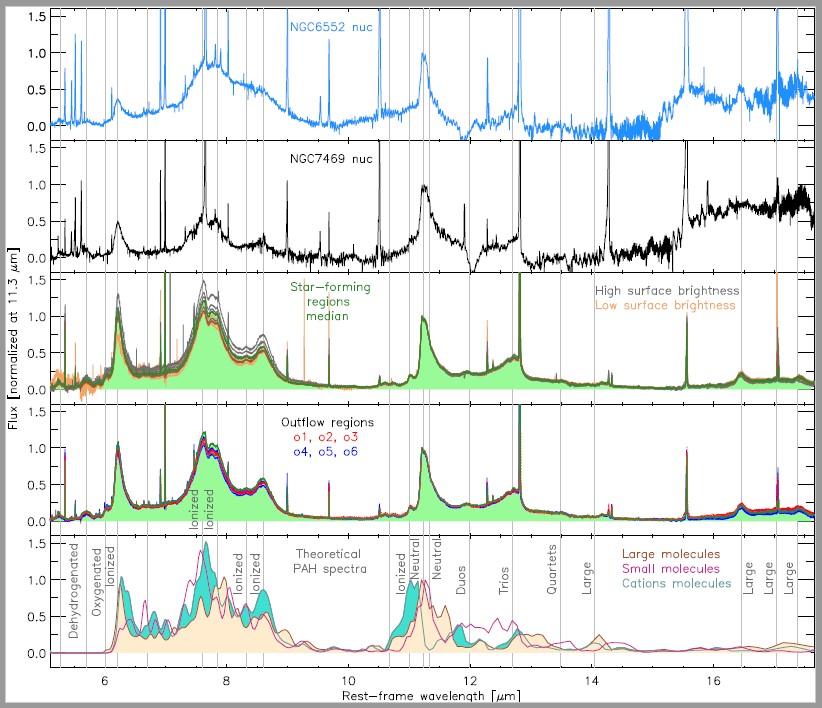Researchers from the University of Oxford used data from the first observations of the space telescope
For their work, scientists usedspectroscopic data collected by the Webb Telescope's Mid-Infrared Instrument (MIRI) for three active galactic nuclei. This device measures light in the wavelength range from 5 microns to 28 microns. The researchers then compared the observations with theoretical predictions for polycyclic aromatic hydrocarbons.
 Spectral data obtained by the James TelescopeWebb" for the active nuclei of three galaxies. The vertical gray lines correspond to the spectral emission of the most common PAHs. Image: I. García-Bernete et al., Astronomy & Astrophysics
Spectral data obtained by the James TelescopeWebb" for the active nuclei of three galaxies. The vertical gray lines correspond to the spectral emission of the most common PAHs. Image: I. García-Bernete et al., Astronomy & Astrophysics
The results of the work disproved the predictionsprevious studies have suggested molecules must collapse near the black hole at the center of an active galaxy. Instead, the analysis showed that the molecules survive even where very energetic photons should tear them apart. Scientists believe that organic matter is saved by a large amount of molecular gas in the nuclear region.
However, supermassive black holes in the heartgalaxies have had a significant impact on the properties of molecules. In particular, the proportion of larger and more neutral molecules increased, indicating the possible destruction of the more fragile small and charged PAH molecules.
 Spectral data obtained by the James TelescopeWebb" for the active nuclei of three galaxies. The vertical gray lines correspond to the spectral emission of the most common PAHs. Image: I. García-Bernete et al., Astronomy & Astrophysics
Spectral data obtained by the James TelescopeWebb" for the active nuclei of three galaxies. The vertical gray lines correspond to the spectral emission of the most common PAHs. Image: I. García-Bernete et al., Astronomy & Astrophysics
Tiny dust molecules known aspolycyclic aromatic hydrocarbons are among the most abundant organic molecules in the universe and an important astronomical tool. For example, they are considered the main building blocks of prebiotic compounds thought to have played a key role in the origin of life.
PAH molecules produce extremely bright bandsinfrared radiation when illuminated by stars, allowing astronomers not only to monitor star formation activity, but also to use them as sensitive barometers of local physical conditions. Understanding the composition of organic molecules near the centers of the galaxy will help scientists refine models for studying star formation in this region.
Read more:
An unknown species of winged insect "hidden" in amber for more than 35 million years
Gas leak from Nord Stream was shown from space
See how Jupiter and the Moon approached in the night sky